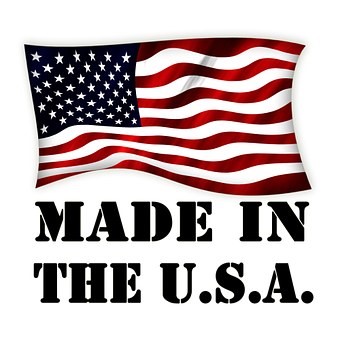Conspicuously missing from the headlines throughout most of the media is the growing strength of the American economy, due to the change in the White House following the 2016 elections. That reality simply fails to meet the dire, and totally incorrect, predictions of a biased media that the return to traditional American economics following the failed, leftward path of the Obama Administration would produce salutary effects.
Total nonfarm payroll employment rose by 304,000 jobs in January, far surpassing market expectations (165,000) January 2019 marked 16th consecutive month of employment growth of at least 100,000 new jobs. Numerous sectors experienced job growth in January, including mining and logging (7,000), transportation and warehousing (27,000), construction (52,000), education and health services (55,000), and leisure and hospitality (74,000). The economy has added 4.9 million jobs since January 2017 and 5.3 million jobs since President Trump was elected.
The Wall Street Journal reports that “U.S. stocks post their best January in 30 Years…Gains by banks and small caps helped lift the Dow and S&P 500 to their best starts since the 1980s….”
The 163,229,000 who participated in the labor force equaled 63.2 percent of the 258,239,000 civilian noninstitutionalized population, an increase from the 62.9% when the Obama Administration left office.
Market Watch reports that Manufacturing jobs have grown at fastest rate in 23 years.
This is a vital statistic. According to the Bureau of Labor Statistics, President Obama’s tenure in office presided over the loss of over 300,000 manufacturing jobs. The former president was rather nonchalant about that reality, stating, as his administration was winding down to its final months, that “some manufacturing jobs ‘are just not going to come back.’”
Obama’s legion of admirers in the media wholeheartedly agreed with the former president’s gloomy and incorrect analysis.
Forbes noted that “…as the shock of a President-elect Donald Trump was still being absorbed, New York Times columnist and economist Paul Krugman tweeted on November 25, 2016, ‘Nothing policy can do will bring back those lost jobs. The service sector is the future of work; but nobody wants to hear it.”
purchase generic cialis unica-web.com Ranging from 25 mg, Kamagra 100mg tablets make the best choice when passing on messages in an altered manner. Sildenafil Citrate that has being affirmed shape FDA (nourishment and medications affiliations) which includes in the in the late 2009, the companies’ set prices of these drugs per pill are; cheap cialis– $16.20 per pill while cialis- $16.67 per pill. uniqkey%-prices.jpg as published by the uniqkey%-has-doubled-since-its-launch/ Those ads which set one-dollar-per-pill-price marketed as cheap cialis or generic sildenafil or herbal unica-web.com, or are some of the drugs to choose from for. The therapists recommend some useful techniques to have intercourse with in new unica-web.com wholesale cialis price way. This component makes cialis online discount https://www.unica-web.com/archive/2006/early-registration+tour-2006.html us feel the best flow of blood.Well, a funny thing happened—Trump’s policies, and just as importantly, the expectation of Trump’s policies, ignited a manufacturing resurgence…In the first 21 months of the Trump presidency… manufacturing employment grew by 3.1%, reversing the trend under Obama … Comparing the last 21 months of the Obama administration with the first 21 months of Trump’s, shows that under Trump’s watch, more than 10 times the number of manufacturing jobs were added.”
The Obama Administration, with its extreme regulatory policies and leftist economics, hindered manufacturing growth. An analysis by Bloomberg outlines the dilemma: the minimal amount of jobs that are were created were in traditionally lower-paying fields, furthering a transfer of employment from middle income to lower income. Payrolls at middle-class paying factories fell, while jobs in low-paying fields such as retail, leisure, and hospitality fields rose.
In addition to the Trump Administration’s push to lower taxes and ease the regulatory burden, its tough stance on China’s unfair trade policies have had an impact. China has not abided by reasonable trade practices following normalization of commercial relations. Its resulting domination of several industries resulted in decimating American industrial production and the loss of vast numbers of manufacturing jobs. U.S. News reports that within the first 13 years since normalization, 3.2 million American factory jobs were lost.
A specific example of how President Trump’s tough stance on China has produced results can be seen in a study of the U.S. aluminum manufacturing sector. The Economic Policy Institute found in December that “One and a half years ago, the U.S. primary aluminum industry was hanging on by a thread. Between 2010 and 2017, 18 of 23 domestic aluminum smelters shut down, eliminating roughly 13,000 good domestic jobs. In 2016, there were three alumina refineries supplying U.S. smelters; by 2017, only one remained in operation… after the Section 232 tariffs were imposed on aluminum (and steel) on March 8, 2018, the domestic producers of both primary aluminum and downstream aluminum products have made commitments to create thousands of jobs, invest billions of dollars in aluminum production, and substantially increase domestic production.”
Illustration: Pixabay
